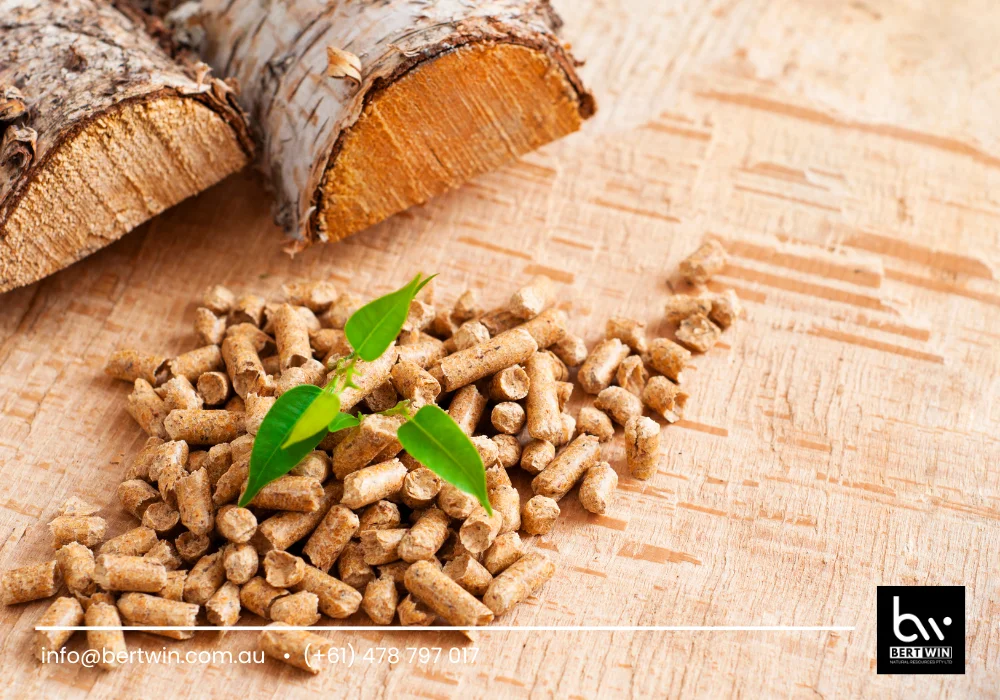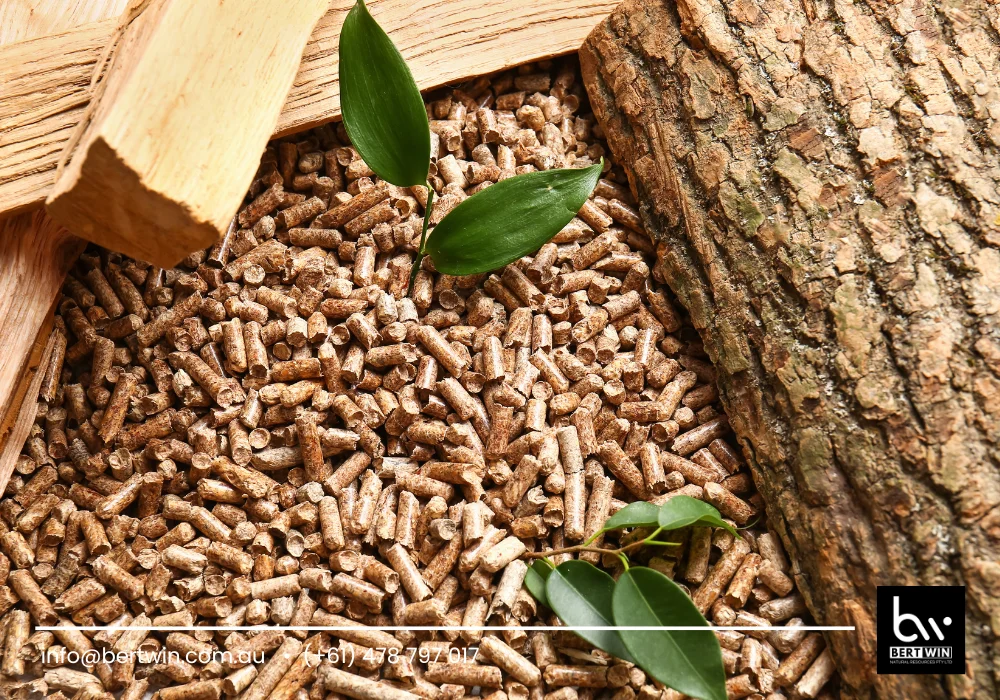
Given the above, it’s important to know what wood pellet price per kg you should expect to pay. Prices vary due to demand, quality, and sourcing, among other factors. You’ll learn how to compare your options so you can save money while still getting high-quality pellets. Dig into these elements to discover the best deals that meet your requirements. In this guide, you’ll get specific tips on how to navigate the market and make decisions with confidence.
Understanding Wood Pellet Prices
What Are Wood Pellets?
Wood pellets are small, cylindrical pieces of compressed wood. They’re mostly made of sawdust, wood shavings, and other wood byproducts. First, we dry the raw materials. Then, we grind them into a fine powder and press that powder under high pressure to form pellets. This process employs waste materials. It also creates an incredibly efficient fuel source for heating and power generation.
Types of Wood Pellets Available
There are several kinds of wood pellets on the market, each with different compositions and price points.
Common varieties include:
- Priced at approximately ¥830 per ton, these pellets are known for their high energy content and low ash production.
- Slightly more expensive at around ¥850 per ton, redwood pellets offer a unique burning quality that enhances heat output.
- These are usually priced lower at about ¥770 per ton, making them a cost-effective option for many users.
The type of pellet you choose will affect both your heating system’s efficiency and your overall cost. As the demand for wood pellets continues to grow, understanding these differences can help you make informed purchasing decisions.
Benefits of Using Wood Pellets
Using wood pellets as a fuel source presents several benefits:
- With retail prices averaging around $170 per ton for small packages and $135 per ton for larger packages in the US market, wood pellets can provide an economical alternative to fossil fuels.
- Wood pellets are made from renewable resources, contributing to reduced carbon emissions compared to traditional heating methods.
- The production cost of biomass pelletisation is about $48.78 per ton, indicating strong competitiveness in the international market.
- The global wood pellet market is projected to grow at a compound annual growth rate (CAGR) of 7.28% from 2021 to 2026, reflecting increasing demand.
Transportation costs can vary depending on fuel price changes. Regulatory changes also impact overall pricing. Seasonality can cause spikes in demand and prices. For instance, warm winters tend to translate into demand and prices that are lower than normal.
Factors Influencing Pellet Prices
1. Supply and Demand Dynamics
Supply and demand is at play when it comes to wood pellet price per kg. As demand spikes, particularly during the colder months, wood pellets become the go-to in-home heater. This heightened demand pushes prices up. Should production exceed demand, prices will fall. This balance is a function of consumer behavior, market trends, and I would say even of the work of my colleagues.
2. Production and Transportation Costs
Production wood pellet price per kg include a number of key components that are major factors in the cost of wood pellets.
Key contributors include:
- Energy costs: Drying wood consumes nearly 70% of the total energy required in pellet production. The cost of electricity to power the machinery also factors heavily.
- The expenses associated with labour are substantial, as they directly affect the cost per metric tonne of pellets produced.
- The price of raw materials, such as EFB fibre, is another critical factor influencing overall costs.
- Regular maintenance and repairs for equipment can add approximately $5-6 per tonne to production costs.
Transportation costs are just as big a deal. The price of diesel fuel affects the cost of delivering pellets from production facilities to end-users.

3. Seasonal Variations in Prices
Wood pellet price per kg fluctuate depending on seasonal demands. In winter months, demand for heating typically climbs, which can push prices up. In warmer seasons, demand may slow down and prices may drop. There is a seasonality to these trends.
4. Quality and Certification Standards
Wood pellet quality can vary widely depending on production methods and raw materials. Higher-quality pellets that are certified to specific standards typically cost more. These certifications give consumers confidence that the product will work well and is sustainable; people pay extra money for trustworthy products.
Finding the Best Pellet Deals
Identifying Trustworthy Pellet Suppliers
If you’re on the lookout for trusted pellet suppliers, keep a handful of important factors in mind. First, you should check out local options, since they tend to offer lower prices. For example, one person claimed to pay $320 per ton after delivery and storage from a local supplier.
Explore brands known for their quality, such as Vermont Pellets. These options may be more bang for your buck. It’s also a good idea to look at reviews and ratings from other customers. This feedback can help you judge the reliability of a supplier and the quality of their pellets.
Keep in mind that prices change based on location and demand, among other things. In one area, there was a report of people paying up to $300 per ton. Meanwhile, someone else paid $395 elsewhere. Watch out for suppliers who frequently increase their prices due to operational expenses.
In some cases, stores may charge higher rates due to hourly rate adjustments, which can make finding decent deals tough. Keeping up with market trends will help you make smarter buying decisions.
Comparing Bulk Purchase Options
Many consumers buy in bulk, spending thousands to purchase four tons at once. This strategy really reduces the overall wood pellet price per kg. If you’re looking for bulk deals, shop around suppliers. Wood pellet price per kg can differ widely based on where the supplier is located and what they have in stock.
The ideal season to purchase pellets is generally around May to July. Prices are lower during this period, although they start to increase in August. Joining or forming a purchasing group can also lead to better deals. If you pool your resources with other people in your community, you can negotiate lower prices together.
Watch for price fluctuation. Some have said they’ve paid as much as $15 a bag in some places. This variability highlights the need for research before making a purchase. In the end, you’ll find the most reliable suppliers and the best bulk options at the lowest pellet price possible.
Tips for Choosing Quality Pellets
Evaluating Pellet Durability and Efficiency
When choosing wood pellets, you want to keep durability and efficiency top of mind. You want humidity content of no more than 8%, which is high quality. This low moisture level ensures the pellets burn efficiently, producing maximum heat while minimizing waste. The calorific power of the pellets is another important consideration.
Aim for a calorific power between 4.5 and 4.8 kWh/kg. This range shows that the pellets build enough energy to make them viable for heating. Good pellets tend to be around the size of a pencil’s diameter. They measure less than an inch in length. This uniformity helps ensure that the corn will burn evenly, allowing for efficient use in your appliance. Avoid pellets that contain creosote, as this substance decreases appliance efficiency and wears down internal components faster.

Checking for Certifications and Standards
Certifications help identify high-quality wood pellets. One notable standard is the EN PLUS certification. This certification should include a distinct number that identifies the company, along with two letters that designate the country of origin. This certification guarantees that the pellets adhere to certain quality standards. Pellets can be classified into two main categories: high-quality (white) pellets and industrial-quality (brown) pellets.
However, high-quality pellets are typically better for home heating because they have superior burning properties. Ensure that moisture in the pellets is not exceeding or equal to 10 w-%. For complete combustion, it’s all about that moisture level. This increases heating efficiency and reduces harmful emissions.
Conclusion
Wood pellet price per kg can be tricky to navigate. Armed with the right knowledge, you can make an informed choice. That’s where you need to understand what’s going to drive pricing. This knowledge allows you to get the best deals while still having quality. Refuse to get hung up on what the price per kg is. Instead, assess the overall bang for the buck of the pellets you choose.
If you would like to sustainably heat your home or run your appliances, get researching. Take the time to compare different solutions available to you. Don’t be afraid to contact suppliers and ask questions—being proactive pays off. Stay educated and make decisions that are right for you and your bank account. Ready to dig a little deeper? Start shopping now to get the best wood pellet deals out there!
Frequently Asked Questions
What is the average wood pellet price per kg?
MWP average price is between £0.20 and £0.40 per kg depending on quality and supplier. Prices may vary by location and time of year.
Are wood pellet prices seasonal?
Yes, wood pellet price per kg can be seasonal. Demand increases during colder months, which pushes prices up. It pays to buy early for better rates.
How can I find the best deals on wood pellets?
To get the cheapest prices, check online prices from multiple suppliers, look at local stores, and consider buying in bulk. Seek out promotions or discounts during off-peak seasons.
What factors affect wood pellet pricing?
Wood pellet pricing is affected by raw material prices, production processes, transportation costs, and market demand. Quality and brand reputation play a big role, too.
Are cheaper pellets lower in quality?
Not necessarily. While much cheaper pellets may mean poorer quality, some reputable brands are affordable without sacrificing standards. Check certifications and reviews whenever possible.
How do I choose quality wood pellets?
Look for pellets certified by recognized organizations. Look for low ash content, high density, and consistent size. You can also learn about quality through customer reviews.
Can I store wood pellets long-term?
Yes, wood pellets can be stored long-term if kept in a dry, cool place. Just make sure they’re sealed well so they won’t absorb moisture and ruin the quality.
In conclusion, if you are eager to delve deeper into the details of coir products, feel free to explore our website at www.bertwin.com.au. Additionally, for direct and instant connection with our team, you can reach us through the following WhatsApp link here. We look forward to providing you with the information and assistance you need.
